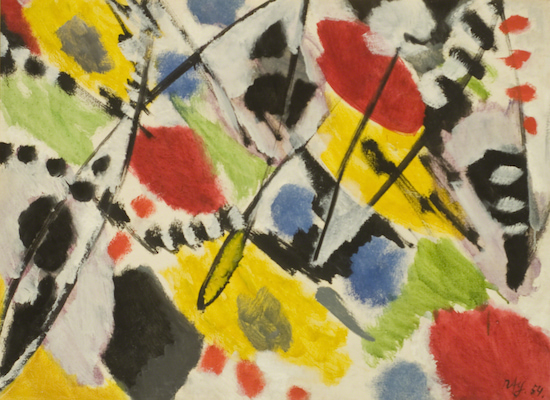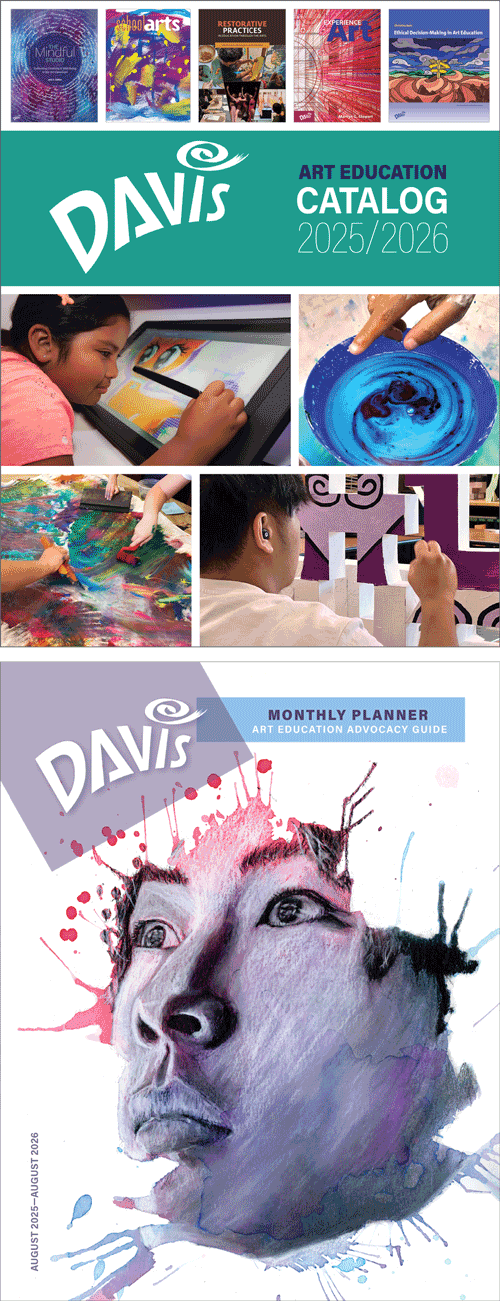Artist Birthday: Ernst Wilhelm Nay
Nay, who was forbidden by the Nazis to paint or even buy art supplies after 1937, painted abstractions secretly in a French sculptor’s cellar while serving as a cartographer in the German army in occupied France. The reemergence of this abstractions after the war contributed greatly to post-war German modernism.
Artist Birthday for 11 June: Ernst Wilhelm Nay (1902–1968, Germany)
Ernst Wilhelm Nay was a German modernist who defied the Nazis by creating art even while serving in occupied France.
 |
| Ernst Wilhelm Nay, Untitled, 1954. Oil on canvas, 58.4 x 76.4 cm. Hirshhorn Museum and Sculpture Garden, Smithsonian Institution, Washington, DC. © 2025 Artists Rights Society (ARS), New York. (SI-250nyars) |
As early as 1937, Nay's paintings had reflected his intense interest in the expressive potential of color. From that point after, his work was characterized by the importance of color and the organizational concept of the series. His works were also greatly influenced by Vasily Kandinsky's (1866–1944) theories about music's sounds and rhythms being related to colors and forms. This untitled work shows a convincing similarity to the total abstraction of Kandinsky, particularly in the emphasis on shapes and energetic line.
European avant-garde artists following World War II (1939–1945) worked to continue the progress they had forged in modernism before the war. New strains of total abstraction evolved that were distinct, yet connected to other international trends. These trends developed parallel to that of Abstract Expressionism in the US. Whereas the American movement was largely a process-oriented style, the European abstract artists explored free-form abstraction that contained narrative or subjective content.
In Germany, there was a strong impulse towards abstraction, with artists like Willi Baumeister (1889–1955) and Ernst Wilhelm Nay producing totally abstract compositions, some with personal forms of abstract symbols. Abstraction was seen as a way for German artists to avoid any representational imagery that might recall the Nazi years.
Ernst Wilhelm Nay was born in Berlin. Developing an interest in art at an early age, he taught himself drawing and painting. His skills were further honed when he studied (1925–1928) at the Berlin Academy of Art under Expressionist painter Karl Hofer (1878–1955). Nay's Expressionistic realism won him the Prix de Rome in Paris in 1931. His work, however, was condemned by the Nazis as "renowned works of ugliness", and his work was part of the infamous Degenerate Art exhibition of 1937.
Nay painted through the war while serving in occupied France as a cartographer. After the war he resumed his pre-war Expressionist realist style, and his work was included in every major survey of contemporary German art. During the 1950s, Nay abandoned his pre-war expressive realism, embracing ideas of pure abstraction. His Disk paintings were very influential on post-war German abstraction. From the 1960s onward, his work was exhibited extensively outside of Europe.

Comments